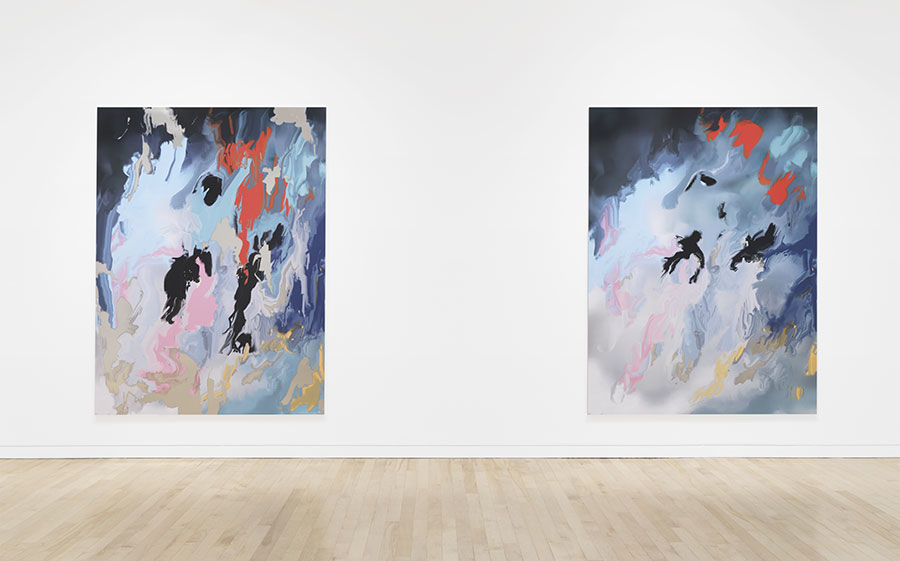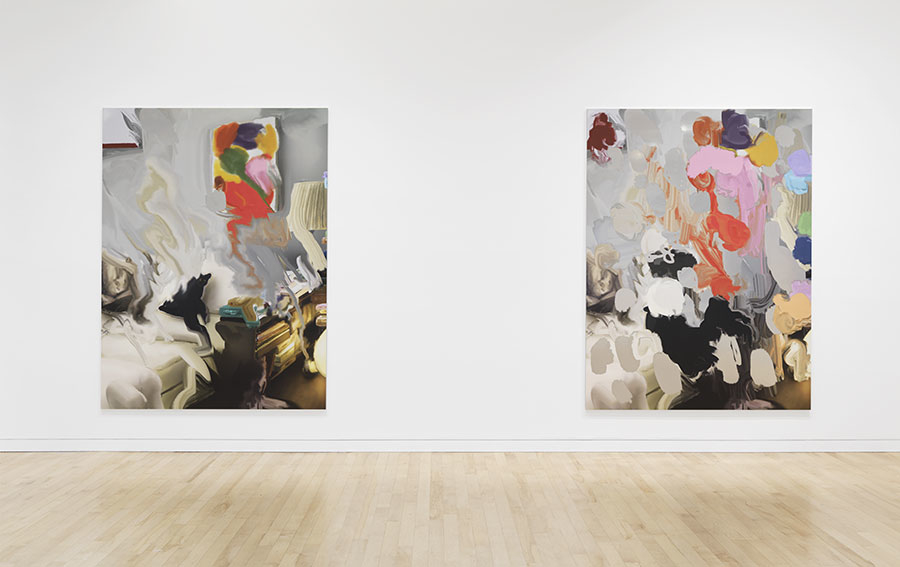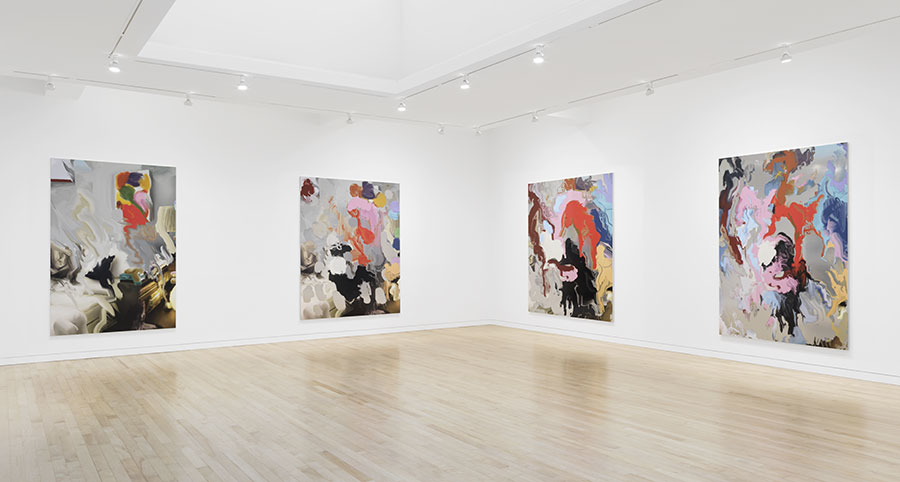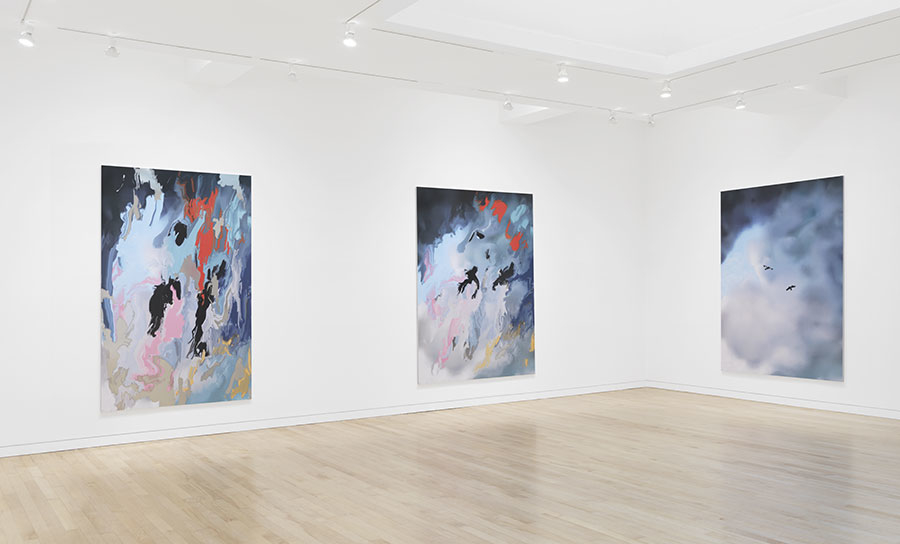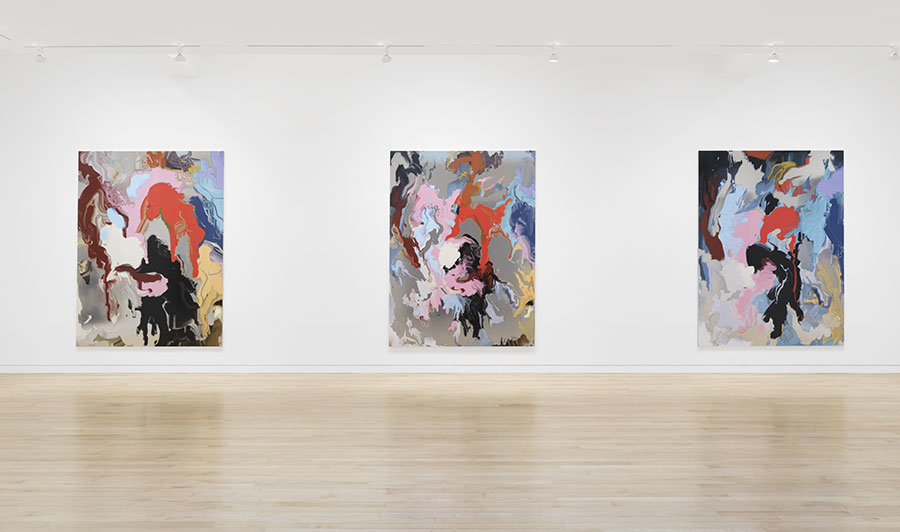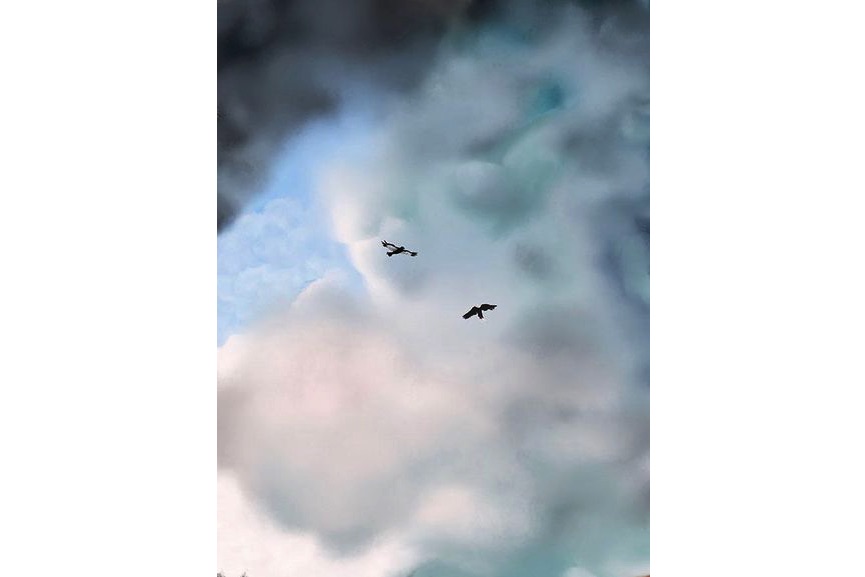ART-PRESENTATION: Urs Fischer-Sōtatsu
Urs Fischer rose to fame in 2011 at the 50th edition of the Venice Biennale when he melted a full-size wax copy of Giambologna’s “Rape of the Sabine Woman”, one of the great masterpieces of Renaissance sculpture.Fischer’s world is fluctuating and unpredictable, and the pleasure that we derive from his sculpture and painting is based on our attraction to and simultaneous repulsion by the dreamlike appearances that he constructs.
By Efi Michalarou
Photo: Gagosian Gallery Archive
A twisted take on the real, Urs Fischer’s work unabashedly declares its affiliation to such art historical movements as Pop, Surrealism, and Dada, all of which similarly toyed with the found image to create new and unanticipated combinations, shifts of scale, and a sometimes violent collision of visual information. Another dimension of Urs Fischer’s work is revealed in his solo exhibition “Sōtatsu” at Gagosian Gallery. The exhibition presents a suite of nine paintings in which Fischer further explores the ways that space and gesture can be divided, stretched, opened, and closed, creating a panorama that is as continuous as it is fragmented. Inspired by the hand scrolls and painted screens of early 17th Century Japanese artist Tawaraya Sōtatsu, who combined the traditional themes of the indigenous school of Japanese narrative scroll painting with the bold, decorative designs of the great screen painters of the Azuchi-Momoyama period. He pioneered the use of such painting techniques as defining shapes and forms with color rather than with ink outlines and applying multiple layers of paint or ink on to a still-wet first layer. His use of color, especially gold and silver, and his treatment of space also influenced later artists. In a 21st Century echo of Sōtatsu’s aesthetic innovations, Fischer also merges traditional art historical themes with new technologies and styles. The paintings are handmade on a digital substrate, then silkscreened onto aluminum panels. Instead of a direct translation from tablet screen to paper surface, Fischer’s process imbues the digital image with an analog tactility; in some places, his painterly gestures loosen, revealing patches of the shiny aluminum beneath. Each individual work unfolds in succession, starting with a view of Fischer’s home. Furniture, books, and artwork on the walls are illuminated both by natural light coming in through a window and by the warm glow of a lamp in the corner. The room and the light continue to disintegrate, objects appearing and disappearing across the nine large panels, concluding with an exterior view: two birds flying in a sky that is at once stormy and clear.
Info: Gagosian Gallery, 980 Madison Avenue, New York, Duration; 3/5-23/6/18, Days & Hours: Mon-Sat 10:00-18:00, www.gagosian.com
